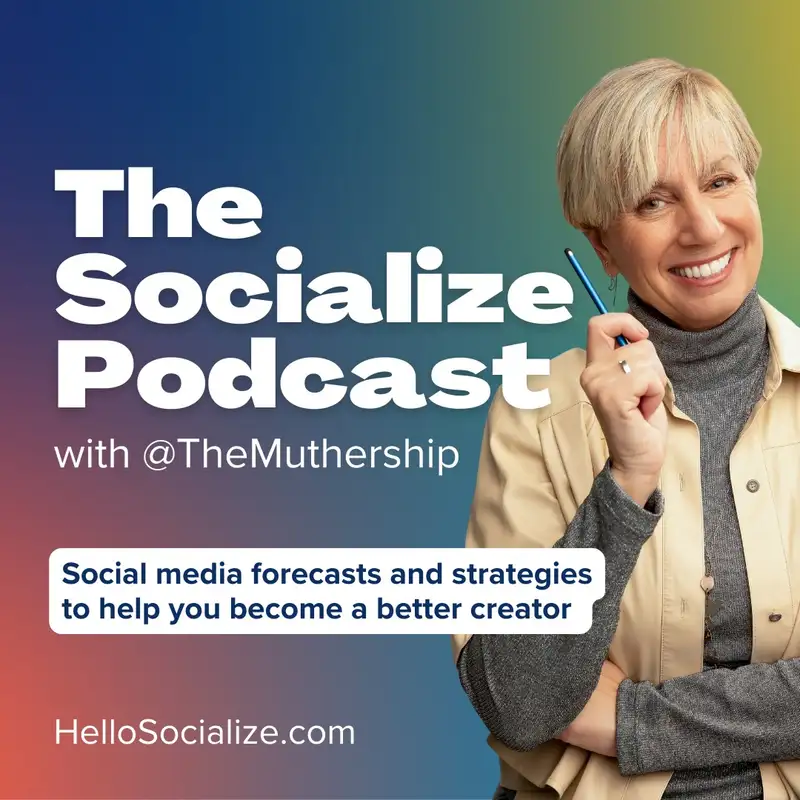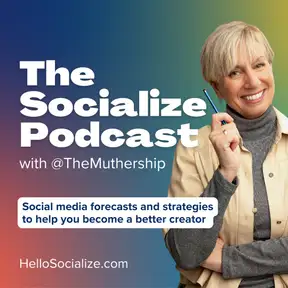The Socialize Strategy - Camera Angles Deep Dive
If you’ve ever wondered why your videos feel flat—even if your content is great—it might be the angles. The right camera angle does more than just capture a scene, it sets the tone, creates emotion, or tells a story without a word.
This week, we’re breaking down the essential camera angles every content creator should know—and how to use them to elevate everything from talking-head videos to creative B-roll and storytelling reels.
Want to know how to put the angles into practice in your own content? Join the studio where we are covering it this week in our live meetings which are all recorded for viewing later:
https://socialize-studio.mn.co
WIDE SHOT (A.K.A. THE ESTABLISHER)
What it does: Sets the scene.
Best for: Opening a video, transitions, or giving your viewer a sense of place or scale.
Try it when: You’re introducing a location or want to ground the viewer in your environment. It’s perfect for storytime intros or vlog-style openers.
.5 LENS / ULTRA-WIDE
What it does: Exaggerates space, adds a bit of distortion and energy.
Best for: POVs, comedic moments, or adding drama or dynamism to mundane actions.
Try it when: You want to make a shot feel dramatic, funny, or awkward. Great for character videos or TikToks that feel personal and chaotic in the best way.
CLOSE-UP
What it does: Brings emotion and detail into focus.
Best for: Conversations, reactions, or product features.
Try it when: You're making eye contact with the viewer or highlighting a specific detail (a tear, a smile, a button press).
POV (POINT OF VIEW)
What it does: Puts the viewer in the character's shoes.
Best for: Tutorials, storytelling, or immersive B-roll.
Try it when: You want your audience to feel like they’re the one doing the thing—opening a door, holding a phone, or reacting to something off-camera.
OVERHEAD SHOT (TOP-DOWN)
What it does: Provides clarity and control.
Best for: Flat lays, recipe content, step-by-step tutorials.
Try it when: You want to demonstrate a process or create clean, organized visuals that feel intentional.
TRACKING SHOT
What it does: Follows a subject through movement.
Best for: Vlogs, behind-the-scenes, transitions between spaces.
Try it when: You want to add motion and life to your content—walking through a space, showing a routine, or following a subject from behind.
DOLLY VS. ZOOM
Dolly: Physically moves the camera closer to or away from the subject.
Zoom: Changes the lens focal length without moving the camera.
Dolly = immersive, Zoom = observational
Try it when: You want to evoke different feelings—dolly in for tension or intimacy; zoom in for surveillance, detachment, or humor
LOW ANGLE
What it does: Makes your subject look larger, stronger, more powerful—or sometimes ominous.
Best for: Authority figures, characters with confidence, or when you want the viewer to feel small or impressed.
Try it when: You're filming a “boss move,” someone stepping into power, or even a dramatic moment in a skit.
HIGH ANGLE
What it does: Looks down on your subject, making them seem smaller or more vulnerable.
Best for: Capturing vulnerability, childlike energy, or uncertainty.
Try it when: You’re showing someone overwhelmed, alone, or creating a moment of empathy or comedy.
✨ Wanna know how to put these angles into your content?
Join the Studio! We’re breaking it down in content from creators like you—analyzing camera angles, testing different styles, and learning what actually works. Whether you’re filming a character reel, a product demo, or a scroll-stopping skit, we’re showing you how to bring your shots to life with the best angles for YOU!
This week, we’re breaking down the essential camera angles every content creator should know—and how to use them to elevate everything from talking-head videos to creative B-roll and storytelling reels.
Want to know how to put the angles into practice in your own content? Join the studio where we are covering it this week in our live meetings which are all recorded for viewing later:
https://socialize-studio.mn.co
WIDE SHOT (A.K.A. THE ESTABLISHER)
What it does: Sets the scene.
Best for: Opening a video, transitions, or giving your viewer a sense of place or scale.
Try it when: You’re introducing a location or want to ground the viewer in your environment. It’s perfect for storytime intros or vlog-style openers.
.5 LENS / ULTRA-WIDE
What it does: Exaggerates space, adds a bit of distortion and energy.
Best for: POVs, comedic moments, or adding drama or dynamism to mundane actions.
Try it when: You want to make a shot feel dramatic, funny, or awkward. Great for character videos or TikToks that feel personal and chaotic in the best way.
CLOSE-UP
What it does: Brings emotion and detail into focus.
Best for: Conversations, reactions, or product features.
Try it when: You're making eye contact with the viewer or highlighting a specific detail (a tear, a smile, a button press).
POV (POINT OF VIEW)
What it does: Puts the viewer in the character's shoes.
Best for: Tutorials, storytelling, or immersive B-roll.
Try it when: You want your audience to feel like they’re the one doing the thing—opening a door, holding a phone, or reacting to something off-camera.
OVERHEAD SHOT (TOP-DOWN)
What it does: Provides clarity and control.
Best for: Flat lays, recipe content, step-by-step tutorials.
Try it when: You want to demonstrate a process or create clean, organized visuals that feel intentional.
TRACKING SHOT
What it does: Follows a subject through movement.
Best for: Vlogs, behind-the-scenes, transitions between spaces.
Try it when: You want to add motion and life to your content—walking through a space, showing a routine, or following a subject from behind.
DOLLY VS. ZOOM
Dolly: Physically moves the camera closer to or away from the subject.
Zoom: Changes the lens focal length without moving the camera.
Dolly = immersive, Zoom = observational
Try it when: You want to evoke different feelings—dolly in for tension or intimacy; zoom in for surveillance, detachment, or humor
LOW ANGLE
What it does: Makes your subject look larger, stronger, more powerful—or sometimes ominous.
Best for: Authority figures, characters with confidence, or when you want the viewer to feel small or impressed.
Try it when: You're filming a “boss move,” someone stepping into power, or even a dramatic moment in a skit.
HIGH ANGLE
What it does: Looks down on your subject, making them seem smaller or more vulnerable.
Best for: Capturing vulnerability, childlike energy, or uncertainty.
Try it when: You’re showing someone overwhelmed, alone, or creating a moment of empathy or comedy.
✨ Wanna know how to put these angles into your content?
Join the Studio! We’re breaking it down in content from creators like you—analyzing camera angles, testing different styles, and learning what actually works. Whether you’re filming a character reel, a product demo, or a scroll-stopping skit, we’re showing you how to bring your shots to life with the best angles for YOU!

